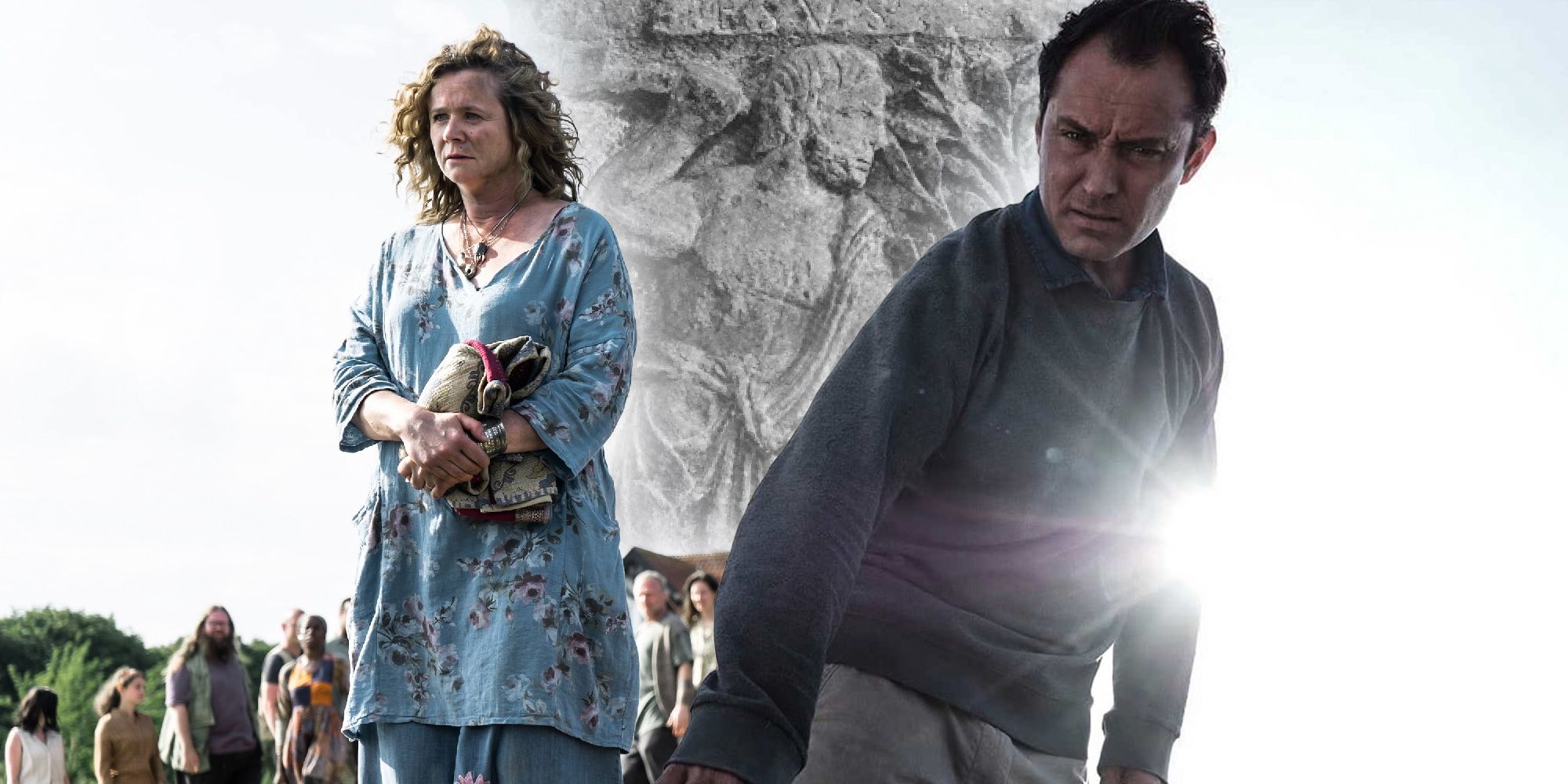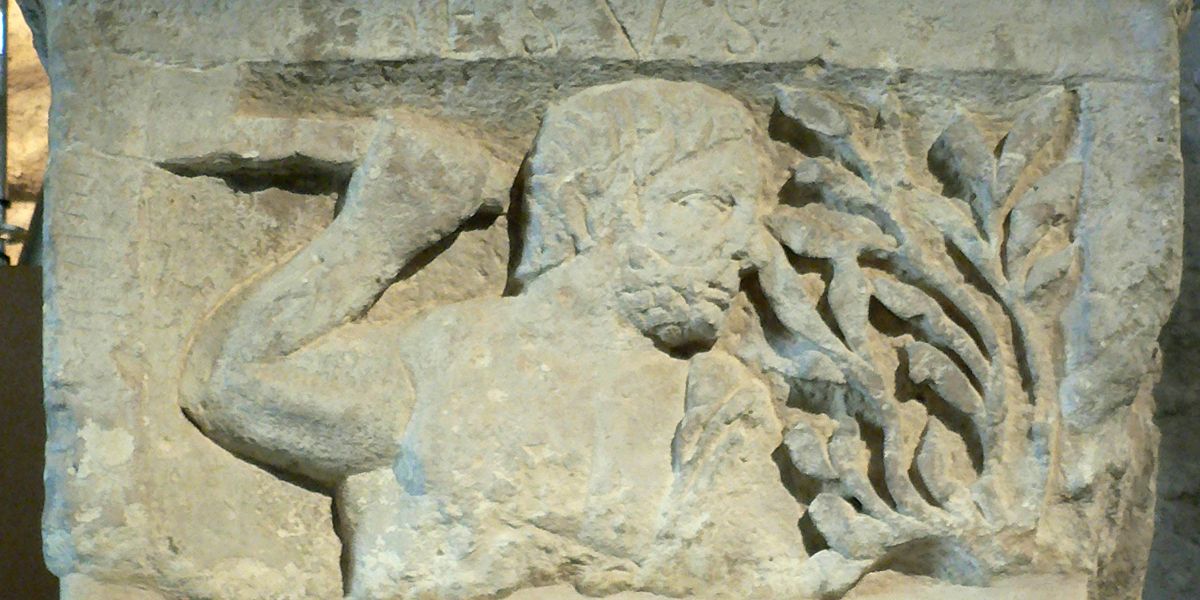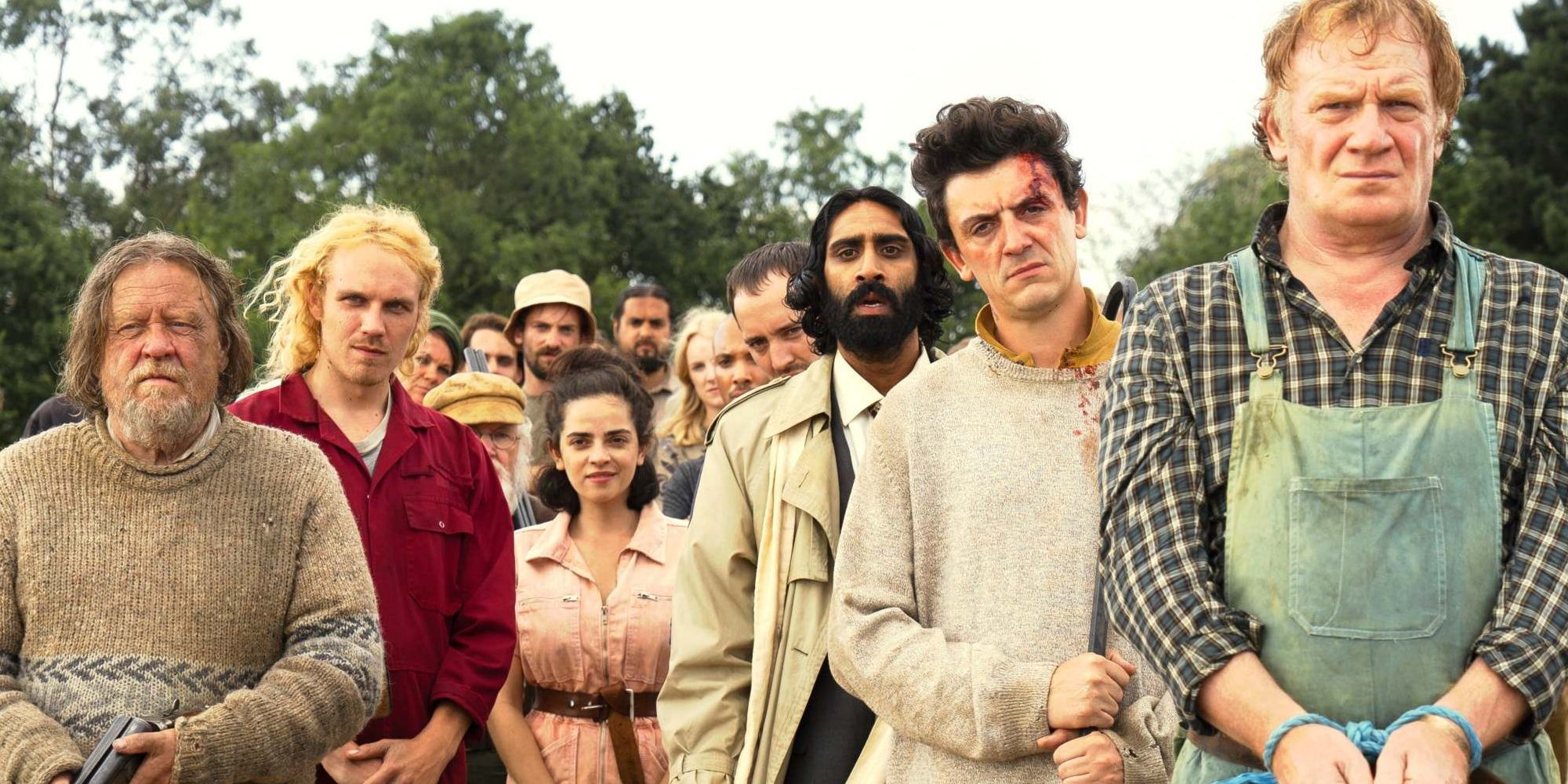HBO's The Third Day features a mysterious island preparing for a ritual involving Esus - but who is this Celtic god and what does this mean for Sam (Jude Law) and the other visitors to the island? Could they be in trouble, or is the upcoming ritual nothing to worry about?
In the first episode of The Third Day, "Friday - The Father," a man named Sam visits a stream in the woods to honor the memory of a lost child. When he sees an adolescent girl trying to hang herself, he runs over and cuts her down. Not wanting to leave her, he offers to drive her home. She leads him to Osea island, only accessible by road during low tide. There, Sam soon discovers that something strange is happening on the island. When the tide comes up before he can leave the island, he settles in for the night, catching on to more clues about what the residents of the island are up to, including some strange and disturbing dreams that may be foreshadowing of the ritual to Esus that is to come.
On the island, the people who live in the village appear to still practice certain Celtic rituals. They are celebrating the god Esus, a powerful Celtic deity portrayed as a bent woodsman of sorts cutting branches from a willow tree with his ax. He is one of three such deities known to the Romans in the 1st century AD. The three gods are Taranis (“Thunderer”), Teutates (“God of the People”), and Esus, meaning "Master" or "Lord." Disturbingly, there was a ritual practiced by the Celts to Esus involving human sacrifice.
The Celtic God Esus Explained
Many Celtic practices have been forgotten or diluted by Christianity and other evolving practices over the centuries, including the legend of Esus. Today, Esus appears in two places: on the Pillar of the Boatman (depicted above) and on another pillar in Trier, Germany. In both instances, Esus is shown cutting branches from a tree. Modern scholars believe Esus may have been the god of vegetation. To honor him, human sacrifices were made by lashing people to trees and flogging them to death.
Esus is also associated with the sacred bull and depicted surrounded by cranes or egrets. It has been suggested that the tree Esus is cutting is the Tree of Life and the cranes represent the flight of the soul - either human or, perhaps, the tree's. In this way, Esus brings about death and destruction in winter to make way for rebirth in spring.
Esus's Tie To Neo-Druidism
Neo-druidism still has ties to Esus, sometimes comparing him to Jesus based on how similar the names are. Although modern scholars believe this is a coincidence, some neo-druidic groups still recognize the distinction. The fact that Esus is still talked about and even worshipped may be the inspiration for the islander's religious beliefs in The Third Day.
Sam, with his visions of the bloody ritual, may be in danger of becoming a human sacrifice. It's quite possible the residents of the island intend to tie outsiders to trees and kill them. While watching The Third Day, it's impossible not to draw parallels with other folk-horror tales, such as The Wicker Man or Midsommar. So far, this seems to be the direction the show is going in. Still, there may yet be some surprises as The Third Day is just getting started.



